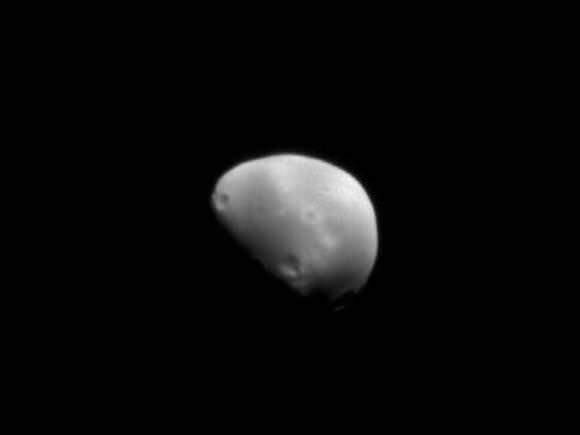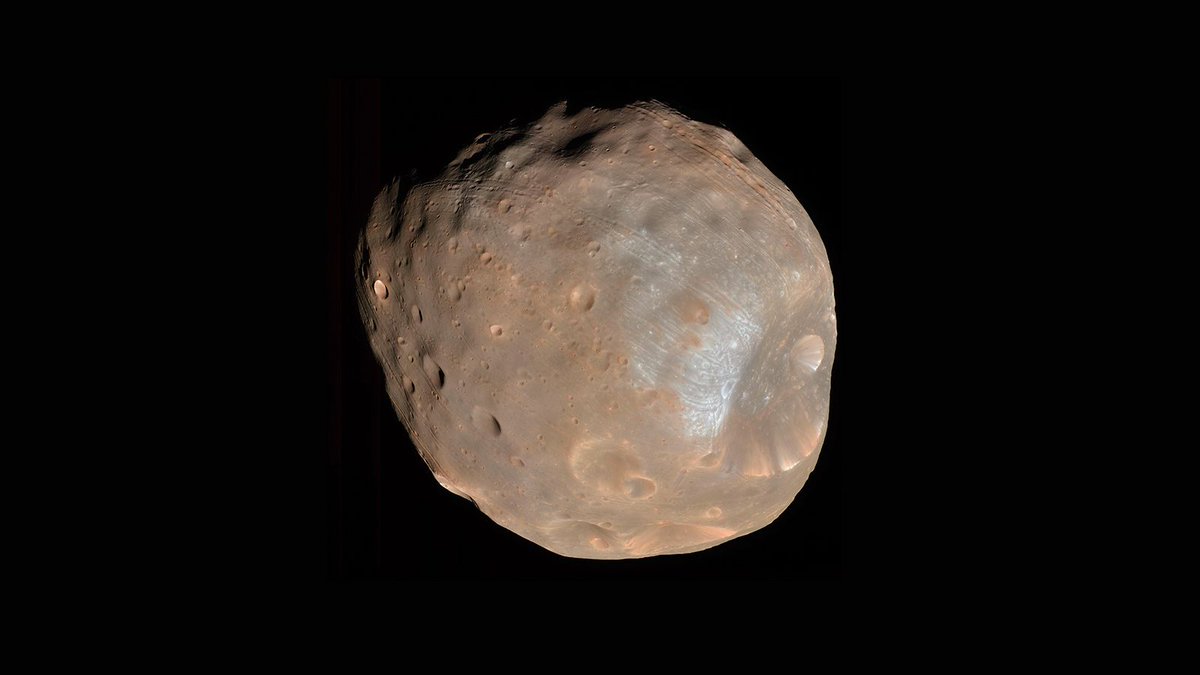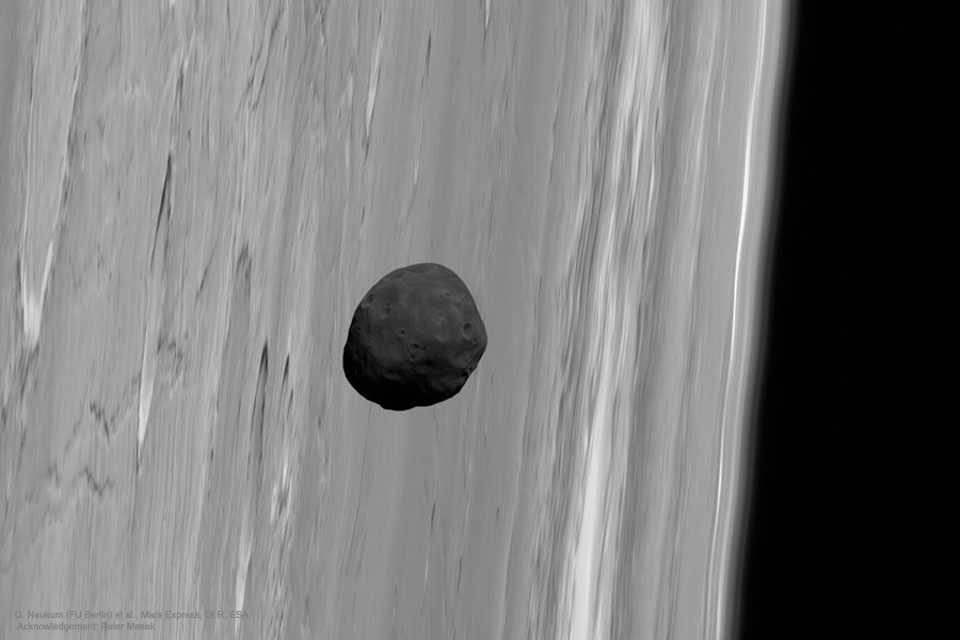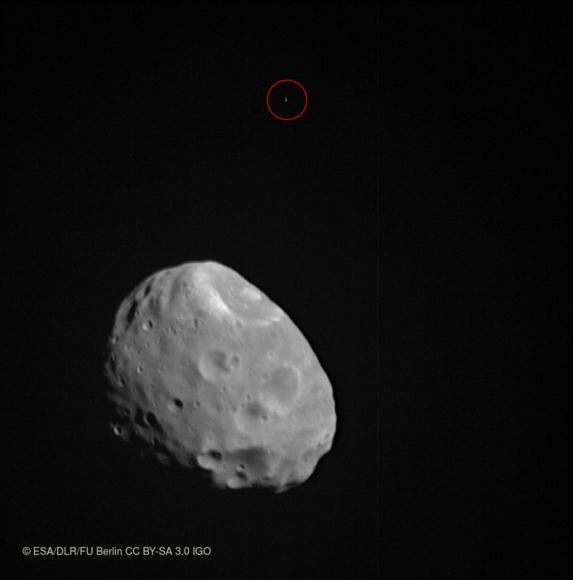We are all familiar with our one Moon but other planets have different numbers of moons; Mercury has none, Jupiter has 95 and Mars has two. A new paper proposes that Mars may actually have had a third larger moon. Why? The red planet has a triaxial shape which means it bulges just like Earth does but along a third axis. The paper suggests a massive moon could have distorted Mars into this shape.
Continue reading “Did Mars Once Have a Third, Larger Moon?”Perseverance Sees Phobos, Deimos and Mercury Passing in Front of the Sun
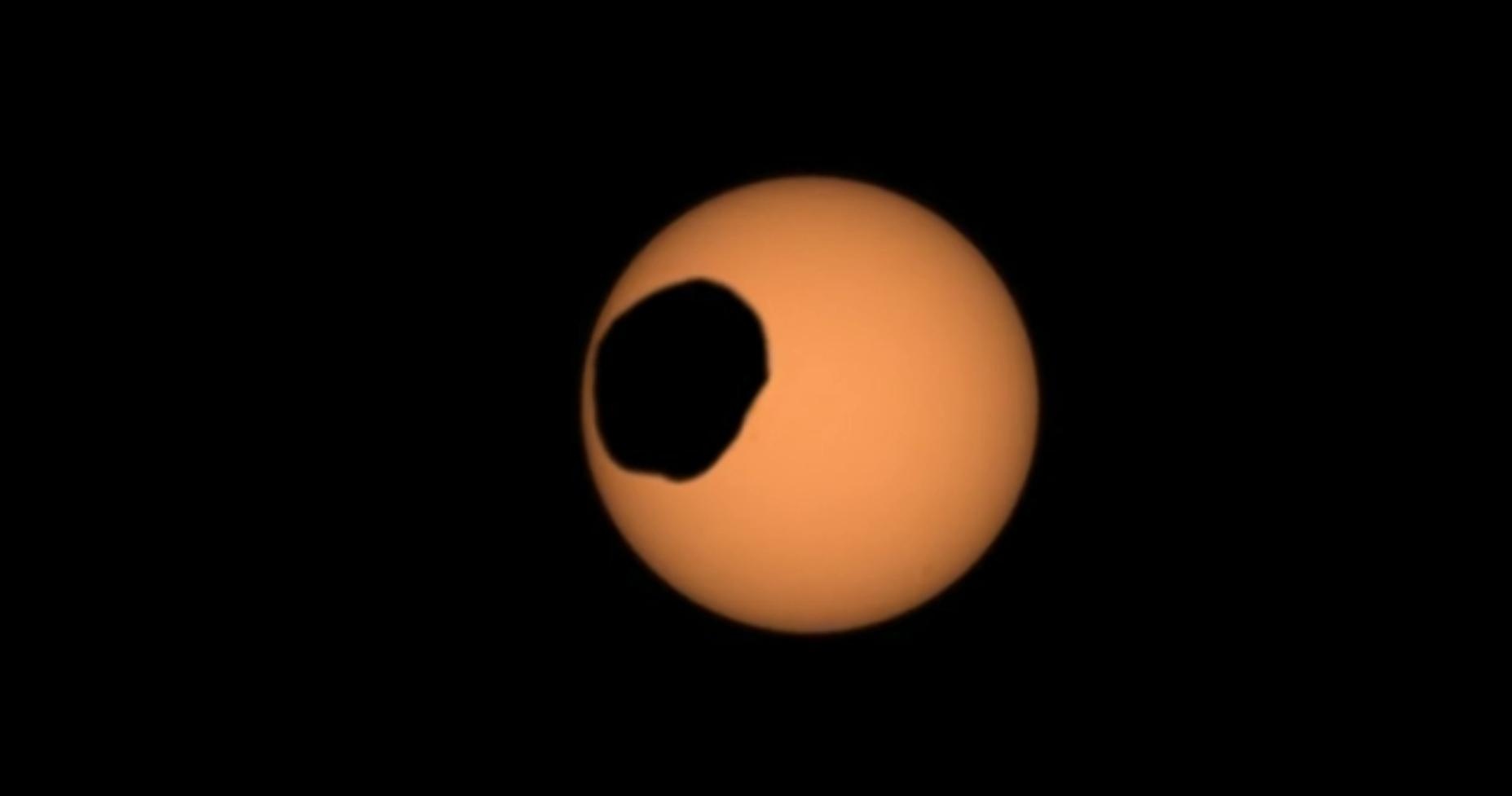
NASA’s Perseverance rover is busy exploring the Martian surface and collecting samples for eventual return to Earth. But the rover recently took some time to gaze upward and observe the heavens. Using Mastcam-Z, the rover’s primary science camera, Perseverance captured Phobos, Deimos, and Mercury as they transited in front of the Sun.
Continue reading “Perseverance Sees Phobos, Deimos and Mercury Passing in Front of the Sun”New High-Resolution Photos of Deimos From the Hope Mission
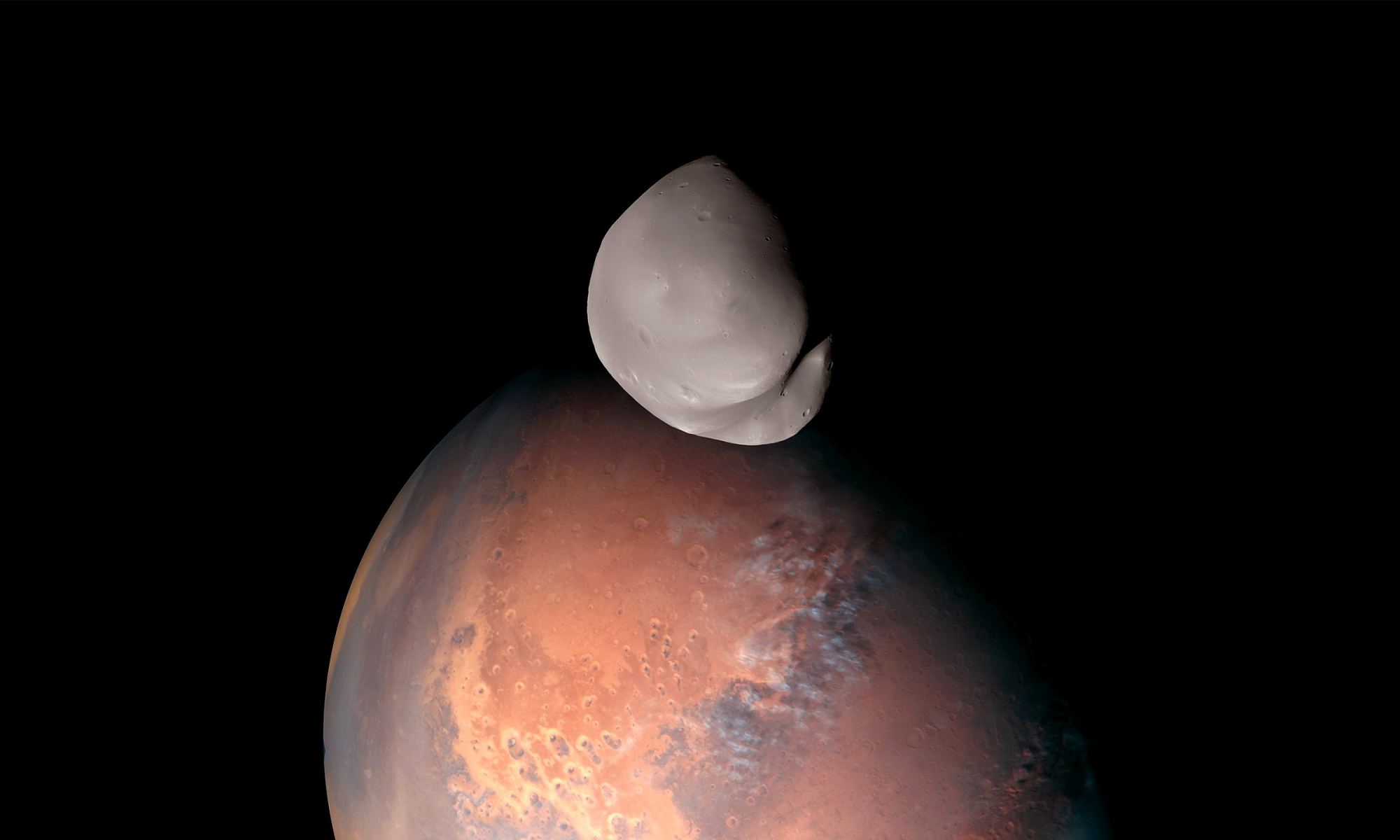
We’ve seen our share of photos of Mars from orbit and the surface, but what about its moons? The United Arab Emirates Hope orbital mission to Mars sent home new beautiful high-resolution images of the Red Planet’s moon Deimos when it flew within 100 km of the moon last month. This is the closest any spacecraft has been to Deimos in almost 50 years.
In the photos, the science team says that their images of Deimos help provide evidence that the moon wasn’t a captured asteroid but came from Mars itself during an impact in the ancient past, much like Earth’s Moon.
Continue reading “New High-Resolution Photos of Deimos From the Hope Mission”Mars Express Watched Deimos Pass in Front of Jupiter and its Moons
That’s no moon … wait … yes, it is, and more!
ESA’s Mars Express has captured an unusual and rare occultation, all from its vantage point in orbit of Mars. The spacecraft’s orbit brought it to the right place where it could witness the moment Mars’ small moon Deimos passed in front of Jupiter and its four largest moons. Scientists say that celestial alignments like these enable a more precise determination of the Martian moons’ orbits.
Continue reading “Mars Express Watched Deimos Pass in Front of Jupiter and its Moons”The Best Evidence for Life on Mars Might be Found on its Moons
The search for Martian life has been ongoing for decades. Various landers and rovers have searched for biosignatures or other hints that life existed either currently or in the past on the Red Planet. But so far, results have been inconclusive. That might be about to change, though, with a slew of missions planned to collect even more samples for testing. Mars itself isn’t the only place they are looking, though. Some scientists think the best place to find evidence of life is one of Mars’ moons.
Continue reading “The Best Evidence for Life on Mars Might be Found on its Moons”Phobos and Deimos: Two Moons, From One Source?
Running the clock back on the enigmatic pair of Martian moons Phobos and Deimos gives researchers insight to their possible origin.
A recent study provides crucial clues on the possible ‘origin story’ for the two tiny moons of Mars, Deimos and Phobos.
Modern astronomy provides us with a snapshot, a look at the present state of affairs across the solar system… but what were things like in the distant past? The existence of the two tiny moons seen orbiting Mars presents a particular dilemma for astronomers. Close up, Phobos and Deimos resemble tiny misshapen captured asteroids… but how did they get into the neat, tidy orbits that we see today?
Continue reading “Phobos and Deimos: Two Moons, From One Source?”Evidence that Mars Used to Have a Ring
Mars only has two moons: Phobos and Deimos. They’re strange, for moons, little more than lumpy, potato-shaped chunks of rock. They’re much too small for self-gravitation to have made them round. And one of them, Deimos, has an unusually tilted orbit.
What does that slight tilt tell us about Deimos? About Mars?
Continue reading “Evidence that Mars Used to Have a Ring”Want To Explore Mars? Send Humans To The Moons Of Mars First: Phobos And Deimos
Humans to Mars. That’s the plan right? The problem is that sending humans down to the surface of Mars is one of the most complicated and ambitious goals that we can attempt. It’s a huge step to go from low Earth orbit, then lunar landings, and then all the way to Mars, a journey of hundreds of millions of kilometers and 2 years at the least.
Continue reading “Want To Explore Mars? Send Humans To The Moons Of Mars First: Phobos And Deimos”Mars Odyssey Reveals Phobos Using THEMIS
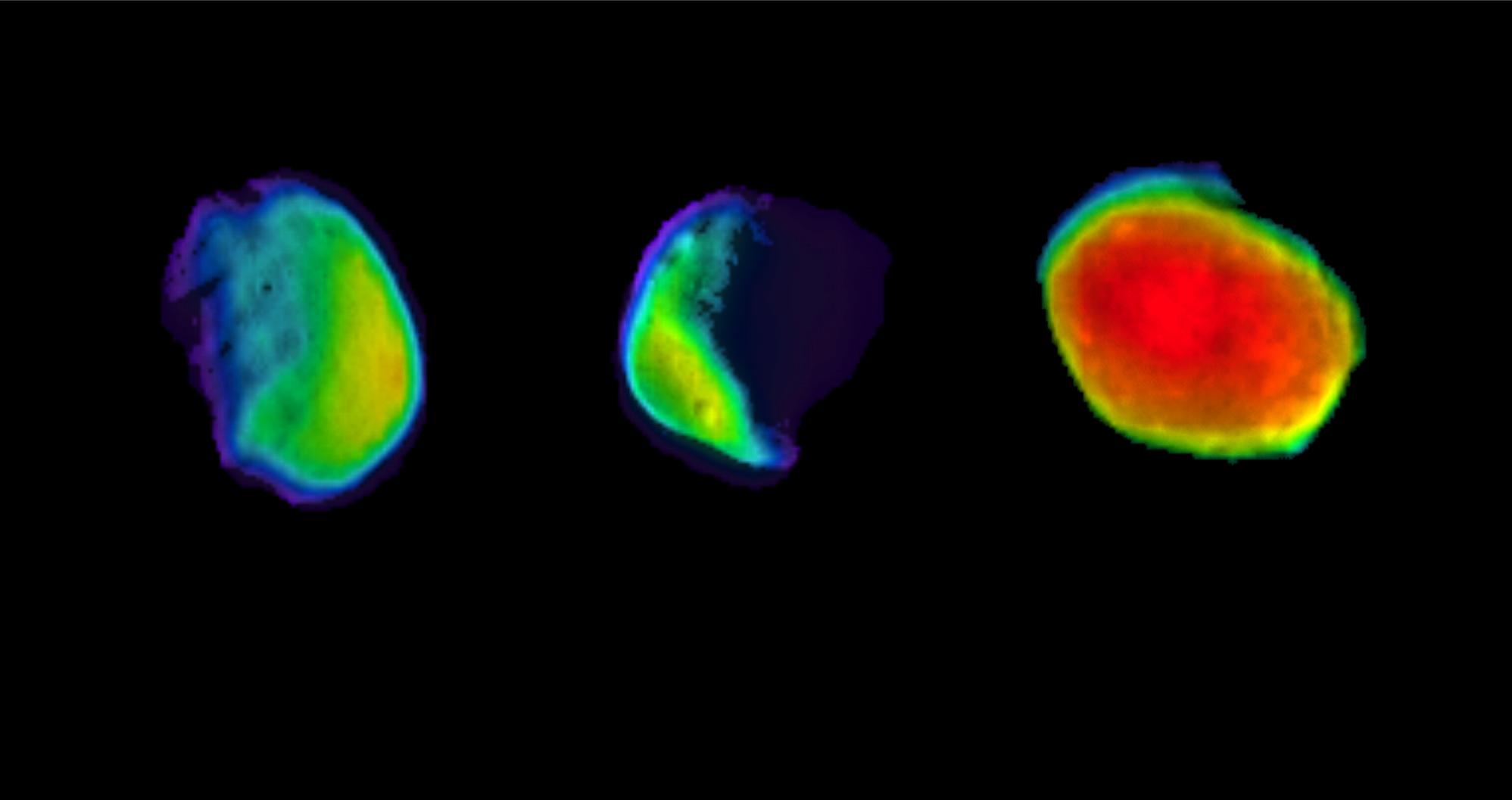
Welcome to the moons of Mars, as you’ve never seen them.
NASA’s aging 2001 Mars Odyssey orbiter recently snapped some unique views of the twin moons Phobos and Deimos, in an effort to better understand their texture and surface composition. The images are courtesy of the spacecraft’s THEMIS (the Thermal Emission Imaging System) heat sensitive instrument, and show the thermal gradient across the surface of the moons in color. Odyssey has been studying the moons of Mars since September 2017. The recent images of Phobos taken on April 24, 2019 are especially intriguing, as they occurred during full illumination phase.
Continue reading “Mars Odyssey Reveals Phobos Using THEMIS”Saturn Photobombs a Picture of the Martian Moon Phobos

The ESA’s Mars Express probe has been studying Mars and its Moons for many years. While there are several missions currently in orbit around Mars, Mars Express‘s near-polar elliptical orbit gives it some advantages over the others. For one, its orbital path takes it closer to Phobos than any other spacecraft, which allows it to periodically observe the moon from distances of around 150 km (93 mi).
Because of this, the probe is in an ideal position to study Mars’ moons and capture images of them. On occasion, this allows for some interesting photo opportunities. For example, in November of 2017, while taking pictures of Phobos and Deimos, the probe spotted Saturn in the background. This fortuitous event led to the creation of some beautiful images, which were put together to produce a video.
Since 2003, Mars Express has been studying Phobos and Deimos in the hopes of learning more about these mysterious objects. While it has learned much about their size, appearance and position, much remains unknown about their composition, how and where they formed, and what their surface conditions are like. To answer these questions, the probe has been conducting regular flybys of these moons and taking pictures of them.
The video that was recently released by the ESA combines 30 such images which show Phobos passing through the frame. In the background, Saturn is visible as a small ringed dot, despite being roughly 1 billion km away. The images that were used to create this video were taken by the probes High Resolution Stereo Camera on November 26th, 2016, while the probe was traveling at a speed of about 3 km/s.
This photobomb was not unexpected, since the Mars Express repeatedly uses background reference stars and other bodies in the Solar System to confirm positions of the moons in the sky. In so doing, the probe is able to calculate the position of Phobos and Deimos with an accuracy of up to a few kilometers. The probes ideal position for capturing detailed images has also helped scientists to learn more about the surface features and structure of the two moons.
For instance, the pictures taken during the probe’s close flybys of Phobos showed its bumpy, irregular and dimpled surface in detail.The moon’s largest impact crater – the Stickney Crater – is also visible in one of the frames. Measuring 9 km ( mi) in diameter, this crater accounts for a third of the moon’s diameter, making it one the largest impact craters relative to body size in the Solar System.
In another image, taken on January 15th, 2018, Deimos is visible as an irregular and partially shadowed body in the foreground, while the delicate rings of Saturn are just visible encircling the small dot in the background (see below). In addition, Mars Express also obtained images of Phobos set against a reference star on January 8th, 2018 (see above) and close-up images of Phobos’ pockmarked surface on September 12th, 2017.
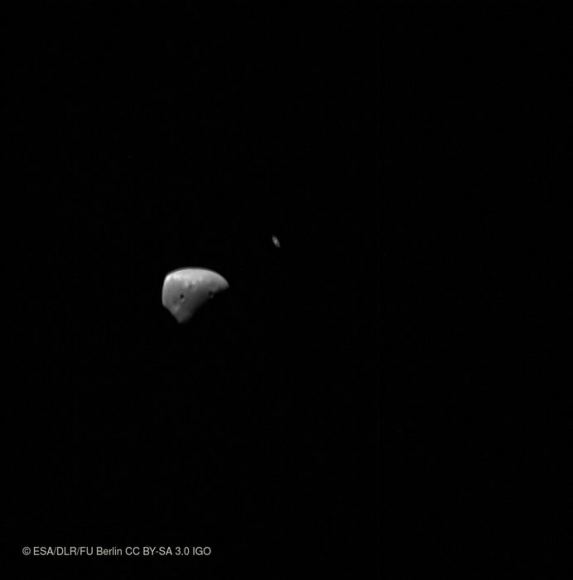
In the future, the Mars Express probe is expected to reveal a great deal more about Mars’ system of moons. In addition to the enduring questions of their origins, formation and composition, there are also questions about where future missions could land in order to study the surface directly. In particular, Phobos has been considered for a possible landing and sample-return mission.
Because of its nearness to Mars and the fact that one side is always facing towards the planet, the moon could make for an ideal location for a permanent observation post. This post would allow for the long-term study of the Martian surface and atmosphere, could act as a communications relay for other spacecraft, and could even serve as a base for future missions to the surface.
If and when such a mission to Phobos becomes a reality, it is the Mars Express probe that will determine where the ideal landing site would be. In essence, by studying the Martian moons to learning more about them, Mars Express is helping to prepare future missions to the Red Planet.
Be sure to check out the time-lapse video of Phobos and Saturn, courtesy of the ESA:
Further Reading: ESA


